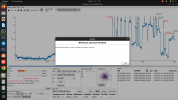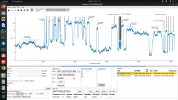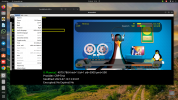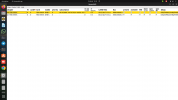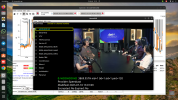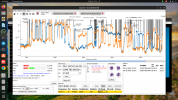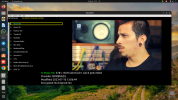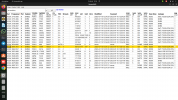Hi Deeptho, I have a question for you since you have both 6903-X and 6909-X.
Between the two, is the best card to buy the 6909-X since it can scan faster than the 6903-X using your parallel blindscan technique ?
TBS specs for the two cards differ on the support for 128APSK and 256APSK; since both use STiD135, does the difference come from the FPGA configuration or the internal links ?
Why would the 6909-X cost a little less than the 6903-X ?
There are a couple of differences:
-6909x is probably more expensive
-6909x has 4 inputs instead of 2 for 6903x
-but the chip is the same. So the support for standards is also the same. Both cards have 4 tuners and 8 demods.
All 4 tuners can connect to all available RF connectors.
-Like crazycat explained: the chip is connected in a different way to the the FPGA that transfers the data from the chip to
the computer on 6903x versus 6909x. This small difference is actually a major disadvantage for the 6903x as it prevents
me from using all 8 demodulators at once. The problem is that data can only be gotten out of the chip for 2 demods in parallel
and not for 8. I tried to find workarounds for that, but had to give up.
So for the user, blindscan is 4x slower on 6903x and only 2 muxes can be tuned at once. For 6909x 8 muxes can be tuned at once
and thus blindscan is also 4x faster.
I have been wondering if this 6903x problem could be solved by reprogramming the fpga (which I cannot do anyway, but
tbs could do that. They won't do that anyway because it is a bad business decision) or it would need hardware modifications (making it practically impossible).
I have the 6909x card and am very happy with it. There are other cards which can do a few things better (like very low symbol rate
or automatic pls code searching), but 6909x provides the best spectrum, the fastest scanning and the most standards.
And TBS has been very helpful in problem solving and the documentation of the chip, while far from perfect, is much better than for
other cards.
With some slight hardware changes, these cards could do a lot more, like supporting "waterfall spectrum" display, tuning
very low symbol rate muxes and even supporting new modulation schemes in software., This is because the chip can capture
raw radio samples. The only problem is that the outputs are not connected to the FPGA and/or the FPGA would need to
be reprogrammed.
it is a pity that some functionality on these cards cannot be unlocked.
Just be careful where you buy the card: when you order directly from china, you risk huge import taxes.


